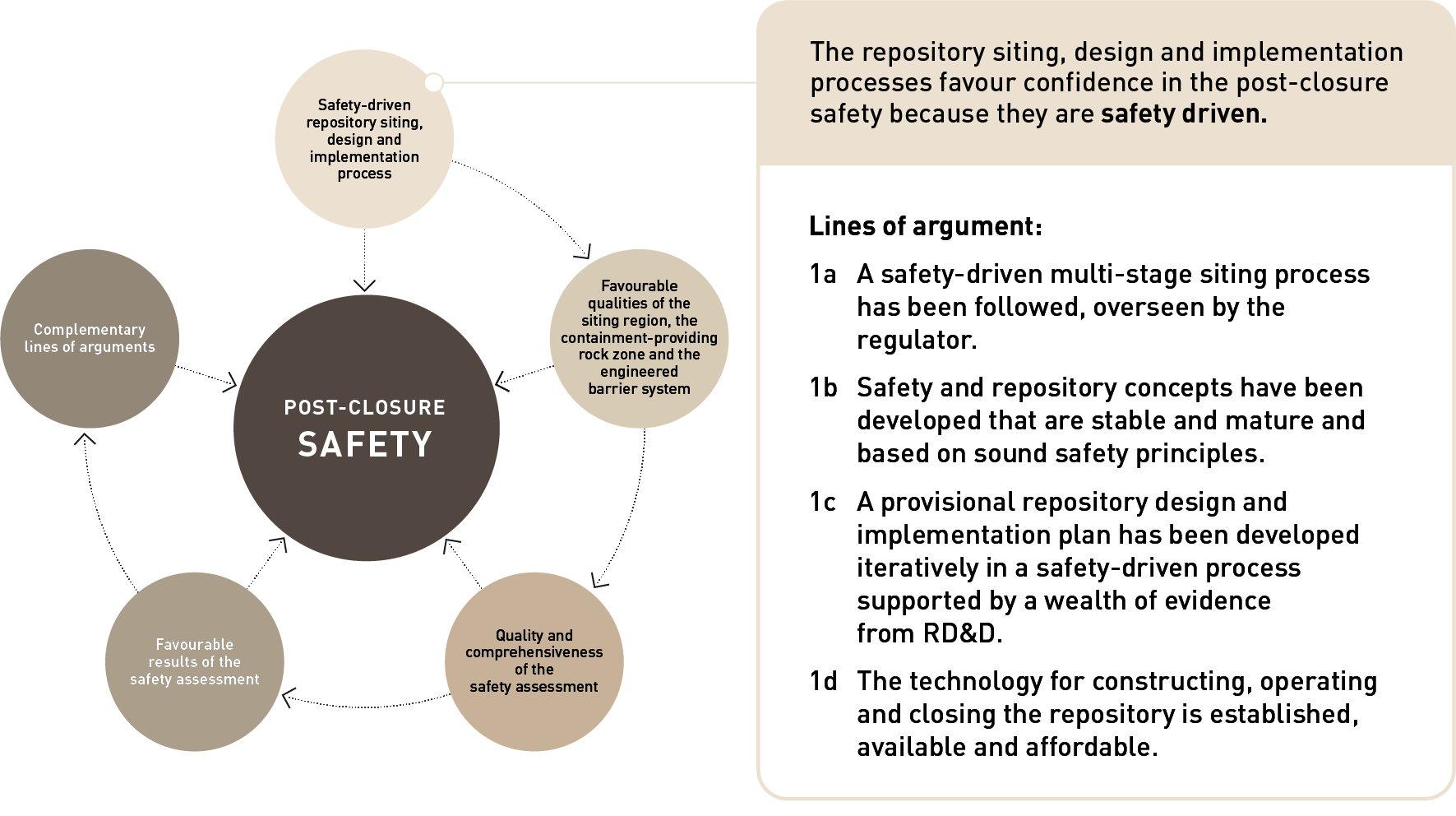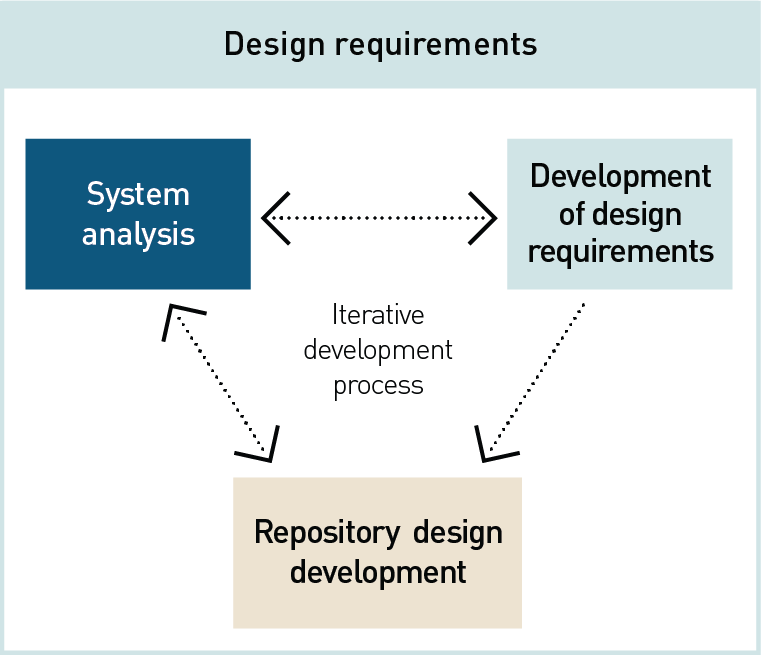Nagra has proposed a repository site and developed a provisional design and implementation plan resulting from transparent, safety-driven processes that have spanned over many years; the repository siting, design and implementation processes generate confidence in the post-closure safety because they are safety-driven. Specific evidence for this argument is summarised in Fig. 10‑3 and elaborated in the following paragraphs.
1a: A safety-driven multi-stage siting process has been followed under the oversight of the regulatory authorities
The Sectoral Plan for Deep Geological Repositories (SGT) regulates the search for suitable siting regions for deep geological repositories in Switzerland. It is conducted in three stages (BFE 2008), Stages 1 and 2 have already been completed, and the general licence application, to which the present post-closure safety case belongs, is a result of the ongoing Stage 3. Clarifications on the safety-related specifications for this stage are provided in ENSI 33/649 (ENSI 2018), and have been fully followed by Nagra.

Fig. 10‑3:Lines of argument for the claim that the repository siting, design and implementation processes favour confidence in the post-closure safety because they are safety-driven
Siting regions have only progressed from one stage to the next, once they have been shown to possess multiple attributes that favour post-closure safety (as well as engineering feasibility), based on criteria developed by the Swiss Federal Office of Energy (SFOE; BFE 2008), together with other agencies and organisations that are independent of Nagra. Provisional safety assessments have been used throughout the siting process to support the narrowing down of potential host rocks and siting regions. The siting process has thus been safety driven from start.
The methodology adopted by Nagra for the comparison of the three siting regions in Stage 3 of the Sectoral Plan is consistent with the safety assessment methodology used for the post-closure safety case, which is summarised in Chapter 4 and described in Chapter 6 of NTB 24‑19 (Nagra 2024t). For a more detailed description of the methodology for site comparison and for the selection of the proposed site, the reader is referred to NTB 24‑03 (Nagra 2025a) and its supporting reports.
1b: A safety and repository concept has been developed that is mature and based on sound safety principles
The safety concept explains how the repository system ensures the protection of humans and the environment through the safety barriers it provides and the safety functions they perform. The repository concept describes these repository safety barriers and their properties. Nagra developed the safety and repository concept for the disposal of all types of radioactive waste more than two decades ago, and the main features have remained largely unchanged throughout the intervening years. This concept, for example, formed the basis for Project Entsorgungsnachweis (Nagra 2002), which successfully demonstrated the feasibility of disposing of HLW and long-lived ILW in the Opalinus Clay of Northern Switzerland, as well as for the subsequent repository siting programme. The current safety and repository concept, though still provisional, is thus considered mature. It conforms with design principles and requirements for a deep geological repository set out in the Nuclear Energy Ordinance of 2004 (KEV 2004), including that the repository ensures post-closure safety through multiple passive safety barriers and that it is designed in such a way that, during operational phase, it can, if necessary, be closed within a period of a few years. It also conforms with international principles of passive safety, optimisation of protection, and defence-in-depth.
Nagra’s current safety and repository concept is described in Chapter 3 of the present report and, in more detail, in NAB 24‑18 Rev. 1 (Nagra 2024s). Design principles are described as part of the contextual and regulatory framework in Chapter 2.
1c: A provisional repository design and implementation plan has been developed iteratively over many years in a safety-driven process supported by a wealth of evidence from RD&D
The present post-closure safety case is based on a provisional repository design and implementation plan that is in line with the regularly updated Waste Management Programme NTB 21‑01 (Nagra 2021c).
The development is safety-driven, meaning that safety is the prime concern when considering refinements or larger changes to the design and implementation plan. An important aspect of this are the system analyses that are performed to establish safety-related design requirements as illustrated in Fig. 10‑4. For example, thermal analyses are performed to formulate provisional requirements on the loading of the HLW disposal canisters, their spatial separation along the HLW emplacement drifts and the lateral separation between the drifts, thus ensuring that the emplacement of heat-generating waste does not compromise the safety functions of the engineered barriers.

Fig. 10‑4:Illustration of the iterative design development process, showing the interactions with system analysis and the development of design requirements
1d: The technology for constructing, operating and closing the repository is established, available and affordable
Based on national and international experience in radioactive waste management and in other industries, the state-of-the-art technology needed for constructing, operating and closing the repository (e.g., for further exploration of the site, excavation, handling of the waste, manufacturing / emplacing the engineered barriers, backfilling) is established, available and affordable. Furthermore, significant technological progress, e.g., in robotics and control, can be expected in near future.
The technology for constructing, operating and closing the repository is described in NAB 23‑01 (Nagra 2023a) and NTB 24‑11 (Nagra 2024b).

